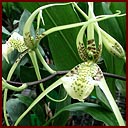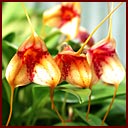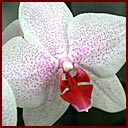

|
  |
 |
Specialize in one Genus
The orchid family, like all plant families, is broken down into genera and then species. Species are genetically compatible and are capable of interbreeding (but usually don't) in nature, For instance there are about 50 species of the genus Phalaenopsis. They all look like phals, but they vary in ways such as color, shape, habitat, etc. The Paphiopedilum genus (Lady's Slipper) has about 60 species that show great variety in color, spike, habit, and size as well as the conditions they prefer. Because the species are all related it is interesting to observe the differences. It is a little like exploring the different temperaments in cousins - great variety in a defined space.
Collect awarded species or hybrids.
In any given group of species or hybrids there will be individual plants that are more colorful, larger, or more floriferous, The American Orchid Society and the orchid societies of several other countries have organized methods to rate the best individuals in any group. The AOS for example has a system whereby plants are scored by a point system. A plant that has outstanding qualities can win High Class Certificate (HCC), Award of Merit (AM) or the most coveted First Class Certificate (FCC). When you see an award added to the name of a plant you know that it excels in one or several traits. An award will usually make a plant more valuable.
1 | 2 | 3 | 4 |






|
 |
|
 |





